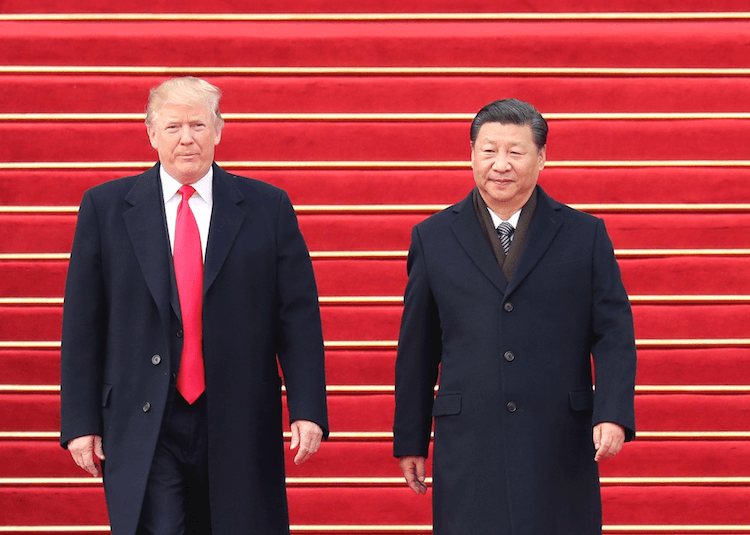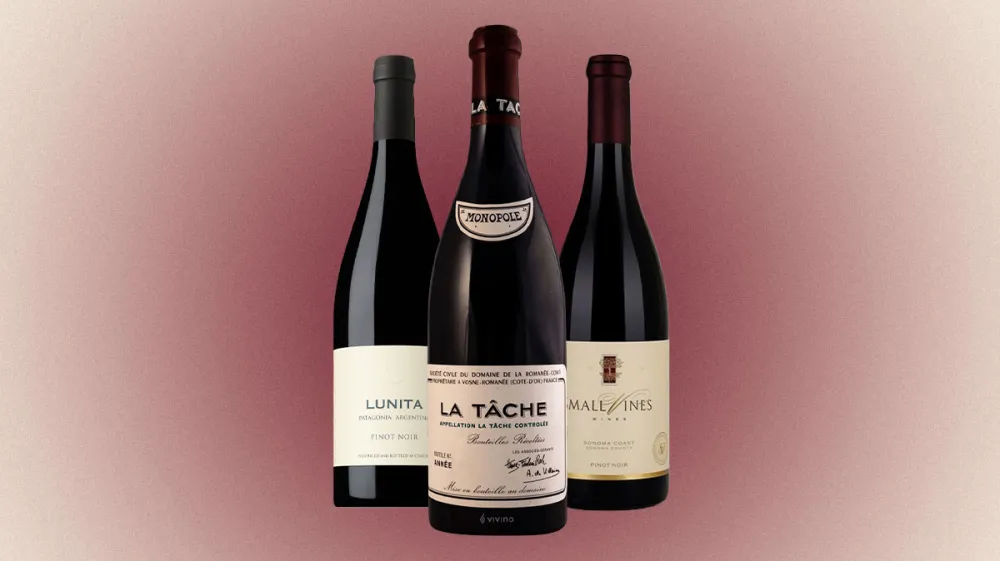In the popular imagination, Orange County, California, is often synonymous with images of sun, surf, and suburban living. This idyllic portrayal of the region has cemented itself as a quintessential vision of Southern California’s mid-century utopianism. However, beneath this placid surface lies a far more intricate and contested history that goes beyond the picture-perfect veneer. Susy Bielak and Fred Schmalz, Chicago-based artists, embarked on a profound artistic exploration of Orange County, delving into its complex narrative and unraveling stories that often remain hidden.
The Artistic Journey
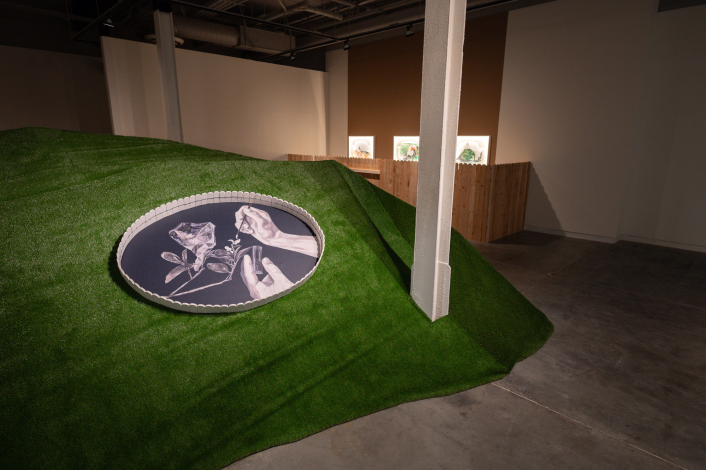
Bielak and Schmalz’s artistic journey began when they were invited to participate in the artists-in-residence program at the Grand Central Art Center (GCAC) in Santa Ana in 2019. John Spiak, the director and chief curator of GCAC, encouraged the artists to immerse themselves in the context of the place, without a predefined plan. This approach allowed them to navigate the uncharted waters of Orange County’s history and culture, guided by a desire to discover the soul of the region.
Over four years, Bielak and Schmalz made multiple visits to the area. They meticulously combed through archives, engaged with members of the community, and roamed the region without specific destinations, all in an attempt to uncover the essence of a place unburdened by guidebooks or stereotypes. Their explorations led them to agriculture as a central theme, shedding light on how the region’s agricultural prominence intersects with immigration, race, labor, land use, and urban development – issues that have profoundly shaped Orange County’s past and present.
Exploring Hybridity
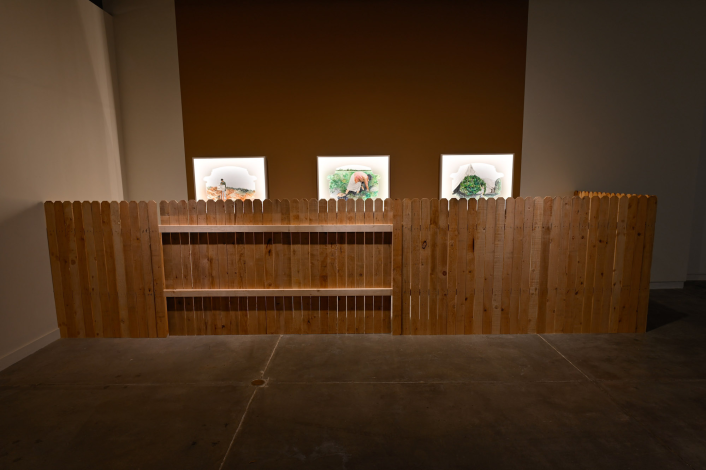
Upon entering the exhibition, visitors are greeted by “Hybrid,” a prominent installation. In its center lies a mound covered in green astroturf, featuring an image of two hands delicately pollinating a flower. This image symbolizes the creation of new hybrid variants, rooted in a print of a painting by Bielak. It is based on an archival photograph from an agriculture magazine, surrounded by a white picket fence, hinting at a human-tailored concept of nature.
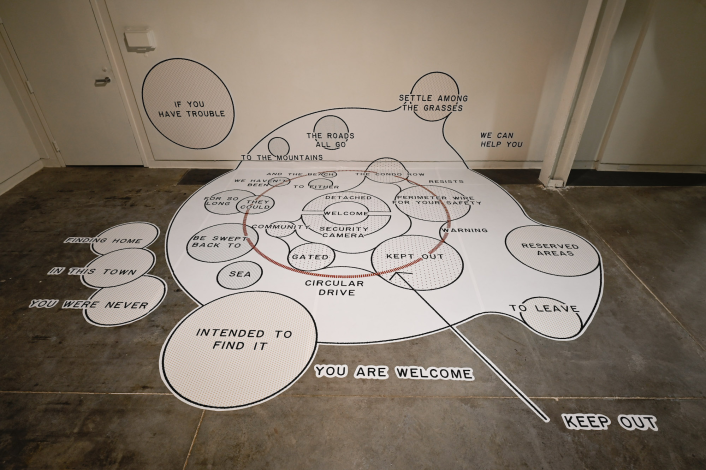
This notion of hybridity and diversity is further explored in Bielak’s paintings. “Restricted Area” portrays a Vietnamese refugee urinating on a sign that reads “Restricted Area – Local Réservé,” based on an archival photo from the Southeast Asian Archive at the University of California, Irvine. “Field” depicts a Japanese-American farmer working in the field, adding another layer to the region’s multi-racial background. “Fumigation” presents an image of a tree covered with a fumigation tent, illustrating human domination over the natural world in pursuit of controlled abundance. These paintings engage viewers with inset LED lights, although the welcoming gesture is obstructed by a fence.
Unveiling the Master Plan
Domination and control are inherent in the master plan of UC Irvine, designed by architect William Pereira in the early 1960s. This plan featured a series of Brutalist buildings surrounding a central, circular space, with the intention of confining students during protests. Bielak and Schmalz overlaid a visual poem onto a vinyl printout of this plan, installed on the gallery’s wall and floor. The text combines various forms of greetings, from rejection to acceptance, reflecting themes of conditionality, safety, and menace.
Community Engagement and Voices
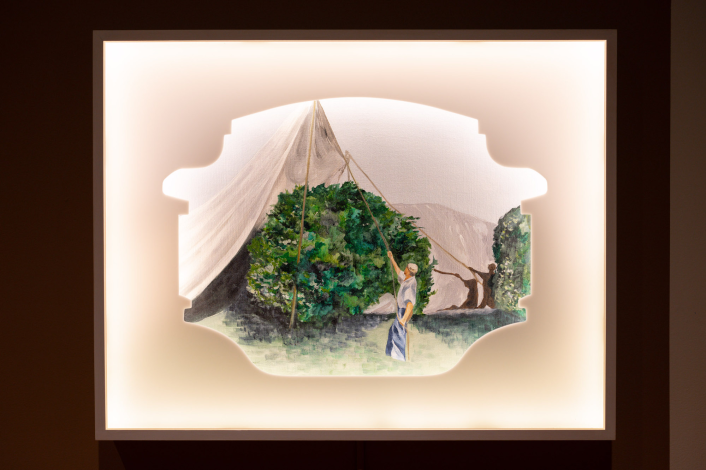
In addition to their archival research, the artists engaged with the local community, including students from Valley High School. Their work features a short video, “Xeno/Mosquito,” with Abraham Hernandez, a former student at Valley High, playing an original composition on tuba in the deserted Orange County civic center plaza. This juxtaposition of urban alienation with individual expression is poignant.
Two audio pieces intermittently play in the space, featuring the voices of students from the Valley High School choir led by Amy Beltran. These pieces extract phrases from historical documents, such as a Ku Klux Klan flier from the early 1920s and slogans from a fair housing protest in the 1970s. Together, they highlight the fragmented history of exclusion, migration, and the ongoing struggles for social justice in the region.
Art Beyond Pedagogy
Bielak and Schmalz’s work is not a pedagogical history exhibition. Instead, it goes beyond being research-driven contemporary art and strives to create art that is palpable, something that people can feel. Their project’s depth and open interpretation set it apart, offering a profound reflection on the complex history of Orange County, with its resonances that extend far beyond the region.
Conclusion
Welcome at the Grand Central Art Center in Santa Ana is a testament to the power of art to uncover hidden narratives and present a more comprehensive and multifaceted story of a place. Through their exploratory art, Susy Bielak and Fred Schmalz have exposed the layers of Orange County’s history, revealing a complex tapestry of immigration, agriculture, and the ongoing quest for social justice. Their work transcends the didactic and embraces the poetic, making it relevant not just locally but on a global scale, mirroring the complex interplay of “welcome” and its many conditions.




